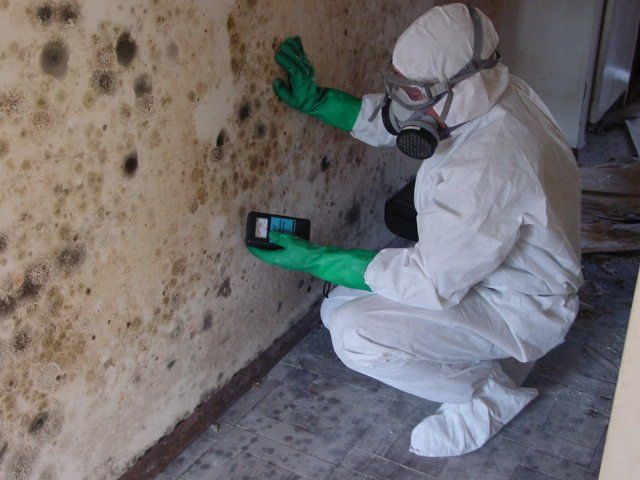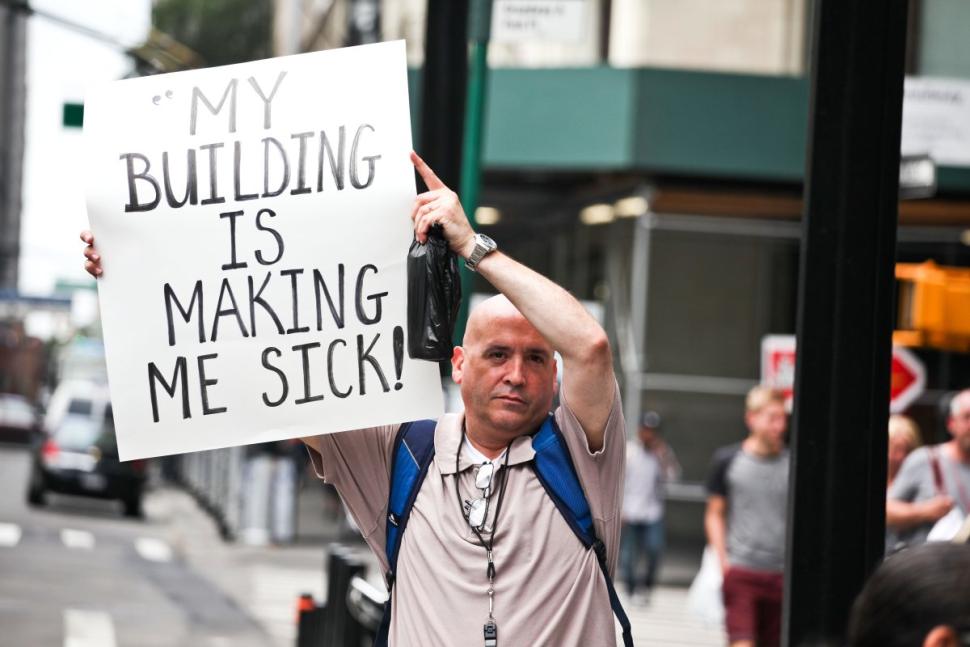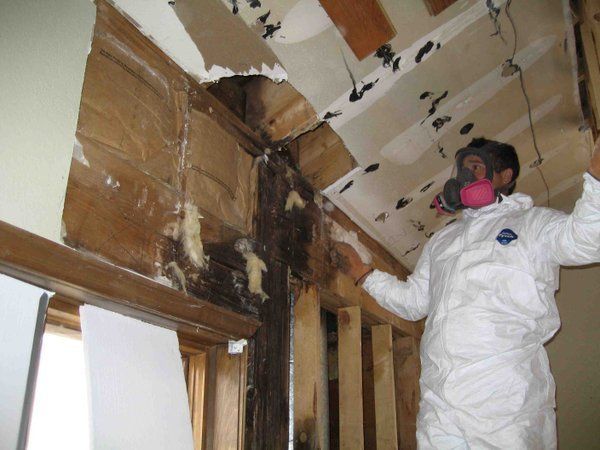


If you are looking for accurate information about toxic mold, you have come to the right place. If someone tells you that toxic mold isn't harmful, they are NOT telling you the truth.
We know there is a lot of confusing and misleading information about toxic mold. The insurance companies, their attorneys and defense experts, and other naysayers and deniers have spent millions of dollars denying the truth about the health effects of mold and mycotoxins.
Government agencies (WHO, EPA, CDC, NIEHS, NIH, FEMA, GAO, HUD, OSHA, state and city governments, etc.) do not publish accurate information about the health effects of toxic mold. Their information is not up to date with the scientific literature.
Bottom line : If someone tells you the inhalation of molds and mycotoxins isn't harmful, they are giving you false information. We hope the U.S. legal system will eventually investigate and prosecute the individuals and corporations involved in this cover-up.
We created this website so you can get accurate and reliable information about toxic mold.
If you find a website, article or document that says toxic mold isn't harmful, that information is
not accurate.
The truth about mold has been known for decades, but "Big Business" and the insurance industry and other
naysayers and deniers have spent millions of dollars denying the truth.....just like they did with tobacco. The tobacco industry denied the truth about the health effects of tobacco for 50 years.
In fact, according to the
Massachusetts report , "sick building syndrome" has been known since World War I, but the first published research paper on the topic did not happen until 1948 in England.
Our website has reports from many government agencies including the World Health Organization ( WHO ), the U.S. Environmental Protection Agency ( EPA ), the U.S. Government Accountability Office ( GAO ) and many other Government Agencies.
The U.S. EPA still refuses to tell the truth about the serious health effects of toxic mold, but they do say:
The purpose of mold remediation is to remove the mold to prevent human exposure and damage to building materials and furnishings. It is necessary to clean up mold contamination, not just to kill the mold. Dead mold is still allergenic, and some dead molds are potentially toxic.
The U.S. EPA also says:
Biocides are toxic to humans. Do not use fungicides developed for use outdoors for mold remediation or for any other indoor situation.
It's important to know that the insurance industry and other
naysayers (deniers) have spent a lot of money trying to stop the use of the term "toxic mold." The truth is that many types of mold produce mycotoxins, so the term "toxic mold" is appropriate.
They like to "spin" the news to their advantage and have paid their defense experts huge sums of money to write reports claiming that mold isn't harmful. This is all part of their "misinformation" strategy to hide the truth about the health effects of mold.
They use similar tactics during litigation. The bad faith insurance companieswill spin the truth and alter the facts and the evidence. They will do ANYTHING to win lawsuits including paying bribes and committing other crimes.
It's also important to know there can be other factors (in addition to mold and mycotoxins) that cause illness in water-damaged buildings. For example, there could be various types of bacteria such as actinomycetes and streptomycetes.
This is a complex issue, so you must be sure to hire qualified experts to help you and get medical treatment from doctors who know how to treat illness caused by toxic mold.
We have hundreds of documents in our files. If you are looking for specific information, research papers , naysayer papers or reports, Contact us.
2022 Paper by the National Academies is even weaker than the paper they published in 2004 (18 years earlier)
The 2022 paper by the National Academies (titled "Why Indoor Chemistry Matters") is even weaker than the one they published 18 years ago (in 2004).
This new report merely includes the key words "mold" and "mycotoxins" a couple times, but it contains no discussion of the health effects. They chose to exclude thousands of scientific research papers on this topic and are clearly out of touch with the scientific community's view of these issues.
To learn more about these inadequate papers by the National Academies, see our discussion of Naysayer papers.
DO NOT use bleach, biocides or ozone on mold.
Some government agencies and disaster recovery organizations still recommend using bleach on mold, but that advice is not accurate.
Serious disinformation has been popularized and reflected in the guidelines given healthcare workers and the public encouraging the use of bleach (sodium hypochlorite) and other chlorinated products for cleaning the mold from damp indoor spaces. Biocides, including chlorine bleach, are harmful to humans and pets. Bleach is a strong corrosive material and will irritate the eyes, skin and respiratory tract. It is cytotoxic and genotoxic and has an accumulative effect on the body and can cause damage to organs.
In regard to using bleach on mold, some species propagate via spores that are unaffected by chlorine, acids, caustics or ozone. In addition, chlorinating carbon-based organic toxins increases their toxicity by increasing their mutagenicity and their lipid solubility which allows these poisons to enter the skin and accumulate in lipid rich tissue such as fat deposits and the brain.
In regard to using bleach, biocides or ozone inside heating and air conditioning ducts, the National Air Duct Cleaners Association (NADCA) says:
Air duct cleaning service providers may tell you that they need to apply a chemical biocide to the inside of your ducts to kill bacteria (germs) and fungi (mold), and prevent future biological growth. Some duct cleaning service providers may propose to introduce ozone to kill biological contaminants. Ozone is a highly reactive gas that is regulated in the outside air as a lung irritant. However, there remains considerable controversy over the necessity and wisdom of introducing chemical biocides or ozone into the duct work.
In regard to the claims of some service providers who say they need to use chemicals to "sanitize" the ductwork, the National Air Duct Cleaners Association (NADCA) says:
The EPA has not registered any products for sanitizing or disinfecting ductwork. Further, no fungicides are registered for use in ductwork. It is a violation of federal law to use a product in a manner inconsistent with its labeling. For antimicrobials, this law is the Federal Insecticide, Fungicide, and Rodenticide Act (FIFRA). Therefore, any claims of sanitizing or disinfecting ductwork would require the use of a product in a manner inconsistent with its labeling, which is a violation of FIFRA. Violations of FIFRA can result in fines and criminal penalties from the EPA.
Our Mission
Spread the Word
FAIR USE NOTICE: This site may contain copyrighted material the use of which has not always been specifically authorized by the copyright owner. We are making such material available in our efforts to advance the understanding of environmental, political, human rights, economic, democracy, scientific and social justice issues. We believe this constitutes a 'fair use' of any such copyrighted material as provided for in section 107 of the US Copyright Law. In accordance with Title 17 U.S.C. Section 107, the material on this site is distributed without profit to those who have expressed a prior interest in receiving the included information for research and educational purposes.
DISCLAIMER: The contents of this website (including text, graphics and images) are for informational purposes only and do not constitute medical advice. The content is not intended to be a substitute for professional medical advice, diagnosis or treatment. Always seek the advice of a physician or other qualified health provider with any questions you may have regarding a medical condition. Never disregard professional medical advice or delay in seeking it because of something you have read on this website.
All Rights Reserved | Truth About Mold